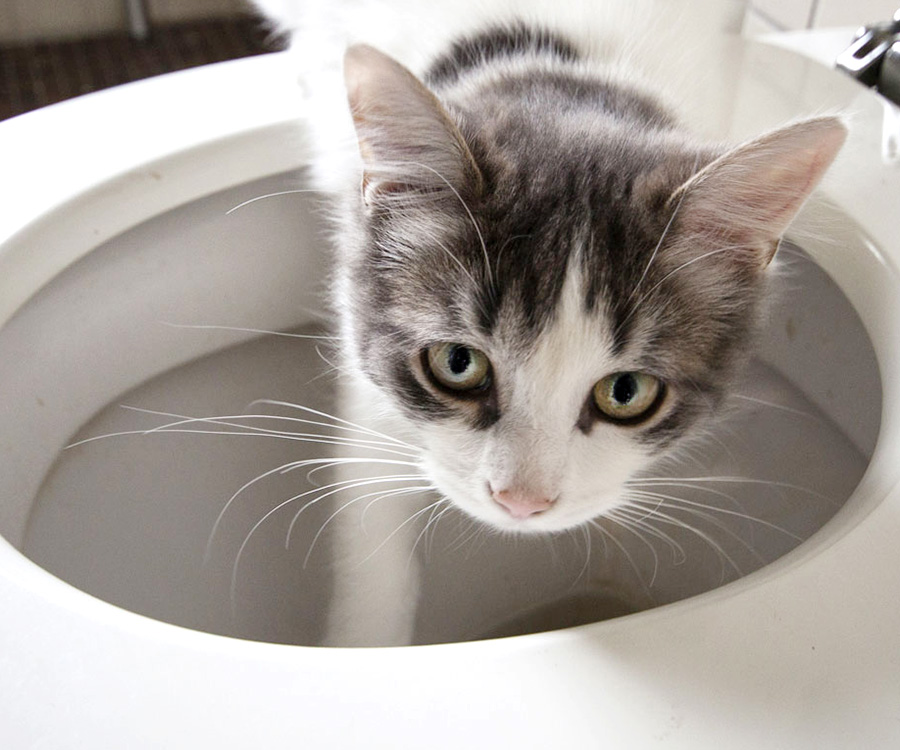Hazards of Flushing Cat Poop Down Your Toilet - Prevent Possible Issues
Hazards of Flushing Cat Poop Down Your Toilet - Prevent Possible Issues
Blog Article
We have noticed the article involving How to Dispose of Cat Poop and Litter Without Plastic Bags listed below on the net and reckoned it made sense to discuss it with you on this site.

Intro
As cat owners, it's necessary to bear in mind just how we deal with our feline good friends' waste. While it may appear convenient to flush pet cat poop down the commode, this practice can have damaging repercussions for both the atmosphere and human health and wellness.
Alternatives to Flushing
The good news is, there are more secure and more accountable means to deal with cat poop. Consider the following alternatives:
1. Scoop and Dispose in Trash
The most common technique of taking care of pet cat poop is to scoop it into an eco-friendly bag and toss it in the trash. Be sure to use a dedicated trash inside story and throw away the waste quickly.
2. Usage Biodegradable Litter
Select naturally degradable pet cat clutter made from materials such as corn or wheat. These clutters are eco-friendly and can be safely thrown away in the garbage.
3. Hide in the Yard
If you have a yard, consider burying cat waste in a marked area far from veggie yards and water sources. Be sure to dig deep enough to prevent contamination of groundwater.
4. Install a Pet Waste Disposal System
Buy a pet dog garbage disposal system particularly made for pet cat waste. These systems make use of enzymes to break down the waste, decreasing smell and environmental impact.
Wellness Risks
In addition to environmental concerns, flushing feline waste can also position health and wellness threats to human beings. Cat feces might have Toxoplasma gondii, a bloodsucker that can create toxoplasmosis-- a possibly serious health problem, especially for pregnant women and people with damaged body immune systems.
Environmental Impact
Flushing feline poop introduces hazardous pathogens and parasites into the supply of water, positioning a substantial risk to water ecological communities. These contaminants can adversely impact marine life and compromise water quality.
Verdict
Responsible pet dog ownership expands past offering food and sanctuary-- it additionally entails proper waste administration. By avoiding purging pet cat poop down the toilet and choosing different disposal approaches, we can lessen our environmental footprint and safeguard human wellness.
Why Can’t I Flush Cat Poop?
It Spreads a Parasite
Cats are frequently infected with a parasite called toxoplasma gondii. The parasite causes an infection called toxoplasmosis. It is usually harmless to cats. The parasite only uses cat poop as a host for its eggs. Otherwise, the cat’s immune system usually keeps the infection at low enough levels to maintain its own health. But it does not stop the develop of eggs. These eggs are tiny and surprisingly tough. They may survive for a year before they begin to grow. But that’s the problem.
Our wastewater system is not designed to deal with toxoplasmosis eggs. Instead, most eggs will flush from your toilet into sewers and wastewater management plants. After the sewage is treated for many other harmful things in it, it is typically released into local rivers, lakes, or oceans. Here, the toxoplasmosis eggs can find new hosts, including starfish, crabs, otters, and many other wildlife. For many, this is a significant risk to their health. Toxoplasmosis can also end up infecting water sources that are important for agriculture, which means our deer, pigs, and sheep can get infected too.
Is There Risk to Humans?
There can be a risk to human life from flushing cat poop down the toilet. If you do so, the parasites from your cat’s poop can end up in shellfish, game animals, or livestock. If this meat is then served raw or undercooked, the people who eat it can get sick.
In fact, according to the CDC, 40 million people in the United States are infected with toxoplasma gondii. They get it from exposure to infected seafood, or from some kind of cat poop contamination, like drinking from a stream that is contaminated or touching anything that has come into contact with cat poop. That includes just cleaning a cat litter box.
Most people who get infected with these parasites will not develop any symptoms. However, for pregnant women or for those with compromised immune systems, the parasite can cause severe health problems.
How to Handle Cat Poop
The best way to handle cat poop is actually to clean the box more often. The eggs that the parasite sheds will not become active until one to five days after the cat poops. That means that if you clean daily, you’re much less likely to come into direct contact with infectious eggs.
That said, always dispose of cat poop in the garbage and not down the toilet. Wash your hands before and after you clean the litter box, and bring the bag of poop right outside to your garbage bins.
https://trenchlesssolutionsusa.com/why-cant-i-flush-cat-poop/

We were shown that write-up about Don’t flush cat feces down the toilet from an associate on another web address. Are you aware of anybody else who is in to the subject? Why not promote it. Thanks a bunch for your time. Please pay a visit to our website back soon.
Source Report this page